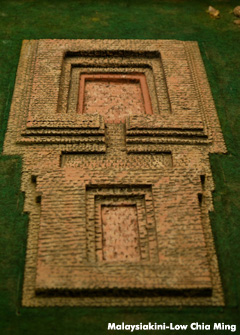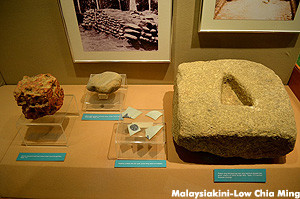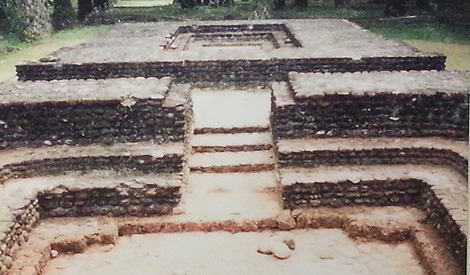COMMENT Prominent Malaysian archaeologist Prof Mokhtar Saidin came out with two important findings during the two-day Old Kedah conference in Sungei Petani, recently.
One was that animism, rather than Hinduism or Buddhism, was the dominant form of worship in the Bujang Valley more than 2,500 years ago. Second, that Bujang Valley stands no chance of being gazetted by Unesco because there is no scientific research to date to verify that the temple ruins were Hindu or Buddhist.
I am not sure whether the two statements have any relationship with one another, or whether Mokhtar is trying to say that since there exists no solid proof of the existence of Hinduism or Buddhism, chances are that the religious worship could even be animism.
Anyway, in days or months to come, I hope Mokhtar can prove to the satisfaction of the international researchers that animism was indeed the dominant practice among the ancients.
He laments the fact that widespread existence of Hindu and Buddhist temples in the valley have yet not be proven. There is lack of scientific objectivity and rigour in establishing the truth about the Bujang Valley.
 Mere presence of artifacts and architectural comparisons about Hindu-Buddhist temples do not reflect scientific integrity. Even the candi (either temple or burial ground) have been reconstructed from the stones and bricks in the vicinity.
Mere presence of artifacts and architectural comparisons about Hindu-Buddhist temples do not reflect scientific integrity. Even the candi (either temple or burial ground) have been reconstructed from the stones and bricks in the vicinity.
Mokhtar said that no efforts have been made, both in the past and the present, to protect the temple sites in the valley. One candi was completely demolished by a developer in 2013, without any consideration for the heritage status of the land.
Mokhtar’s analysis of the heritage status of the Bujang Valley in the recent international conferences raised a number of questions that need to be addressed, both by archeologists, historians and those in the government.
Already acclaimed as Hinduism-Buddhism site
First, Bujang Valley has been internationally acclaimed as an ancient site of Hinduism-Buddhism, that is, before the advent of Islam. If there exists no evidence, whether scientific or not, then there is need to explain how this valley received such an acclaim.
Second, Mokhtar is well-known as an archaeologist and researcher, but for him to say that there is no scientific evidence to prove that the Hindu-Buddhist status of the Bujang Valley raises questions as to what our local researchers have been doing all the while.
 Many excavations have been done in the past and many more are being planned, so, can I ask what is the purpose?
Many excavations have been done in the past and many more are being planned, so, can I ask what is the purpose?
Third, colonial structures in Malacca and Penang have received the heritage status from Unesco. Is it really true that Unesco is withholding the conferment of heritage status on the Bujang Valley because there is no scientific evidence to authenticate the Hindu-Buddhist origins?
If other ancient sites around the world have received Unesco heritage status, what is preventing Bujang Valley from receiving such an award?
Fourth, apart from the lack of scientific rigour or evidence, who is responsible for initiating the area or place to be designated as heritage and what is the role of the state and federal governments?
Is the federal government dragging its feet on this matter simply because it is politically not conducive to do so?
Fifth, if local researchers do not have the technology or the skills, then maybe it is necessary to bring in foreign experts to determine whether there was such a thing as Hindu-Buddhist presence in the Bujang Valley.
Sixth, Saidin wants to prove that animism was widespread in the Sungei Batu area of the Bujang Valley more than 2,500 years, a site older than Borobodur and Angkor Wat.
As I have argued earlier, this might be so. It does not prove that Hinduism-Buddhism was non-existent but all these religions could have co-existed before the rise of monotheism.
Seventh, is there a relationship between the presence of animism and the lack of evidence on Hinduism-Buddhism?
P RAMASAMY is Deputy Chief Minister II of Penang and the state assemblyperson for Perai.



